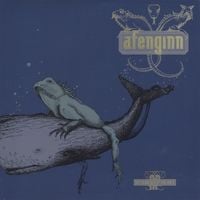
|
THE LEAST WE CAN DO IS WAVE TO EACH OTHERVan Der Graaf GeneratorEclectic Prog4.09 | 1272 ratings |
From Progarchives.com, the ultimate progressive rock music website
 UMUR
like
UMUR
like
Special Collaborator Honorary Collaborator |
 "The Least We Can Do Is Wave to Each Other" is the 2nd full-length studio album by UK progressive rock act Van der Graaf Generator. The album was released through Charisma Records in February 1970. It´s the successor to "The Aerosol Grey Machine" from September 1969 and features two lineup changes since the predecessor as bassist Keith Ellis has been replaced by Nic Potter, and David Jackson (tenor and alto saxophones, flute, backing vocals) has been added as the fifth member. "The Aerosol Grey Machine (1969)" was released under the Van der Graaf Generator monicker in an agreement with Mercury Records to release singer Peter Hammill from his contract with the label, but it was ultimately more a solo album by Hammill than a band effort.
"The Least We Can Do Is Wave to Each Other" is the 2nd full-length studio album by UK progressive rock act Van der Graaf Generator. The album was released through Charisma Records in February 1970. It´s the successor to "The Aerosol Grey Machine" from September 1969 and features two lineup changes since the predecessor as bassist Keith Ellis has been replaced by Nic Potter, and David Jackson (tenor and alto saxophones, flute, backing vocals) has been added as the fifth member. "The Aerosol Grey Machine (1969)" was released under the Van der Graaf Generator monicker in an agreement with Mercury Records to release singer Peter Hammill from his contract with the label, but it was ultimately more a solo album by Hammill than a band effort.Although most of the writing credits go to Hammill, the material on "The Least We Can Do Is Wave to Each Other" was rehearsed and arranged as a band, with the other band members also contributing their ideas and compositional input to the basic song structures. While "The Aerosol Grey Machine (1969)" was a pretty raw and unpolished album, "The Least We Can Do Is Wave to Each Other" is a more detailed and elaborate release. Producer John Anthony encouraged studio experiments including double tracking of Jackson´s saxophones, and putting distortion filters on Hammill´s vocals. While the recording sessions were concluded after only 4 days, the result is a massive improvement over the material featured on the debut album. The material is generally dark, heavy, and organ and vocal driven progressive rock. Hammill is an expressive vocalist with a distinct sounding voice and a commanding delivery, and his lyrics are quite interesting too. "Refugees" being a sort of romantic nostalgic tale of emigrants (I understand Hammill may have had another meaning behind the words, but that´s how I interpret them), "White Hammer" dealing with the Malleus Maleficarum and the subsequent witchhunts, and "After the Flood" telling the tale of an apocalypse caused by a massive flood. Some tracks are dark and heavy ("Darkness (11/11)" and "White Hammer"), while others feature a slightly lighter but still melancholic atmosphere ("Refugees" and "Out of My Book"). The original album release featured 6 tracks, while the 2005 remaster features two bonus tracks, which are the two tracks from the April 1970 "Refugees"/"The Boat of Millions of Years" single. The single version of "Refugees" featured a nine-piece orchestra arrangement and it´s quite different from the original album version. What strikes me the most when listening to "The Least We Can Do Is Wave to Each Other" is how unique and original Van der Graaf Generator already were this early on in their career. The combination of Hammill´s voice and paatos filled (at times almost theatrical) singing, the dark organic organ and piano playing by Hugh Banton, the many great saxophone and flute parts by Jackson, the busy organic drumming by Guy Evans, and the solid bass patterns played by Potter make up a whole, that is unlike any other artist on the scene. There are some acoustic guitar parts here and there (played by Hammill), and Potter also plays some electric guitar (predominantly on "Whatever Would Robert Have Said?"), but the guitar is not a dominant instrument on the album, although "The Least We Can Do Is Wave to Each Other" is probably the Van der Graaf Generator album featuring most guitar parts. "The Least We Can Do Is Wave to Each Other" features a detailed, powerful, and organic sounding production job, which suits the material perfectly and upon conclusion it´s not just a giant leap forward from the debut album, it´s also a high quality progressive rock album on its own terms. A highly original release fully deserving a 4 star (80%) rating.
UMUR |
4/5 |
MEMBERS LOGIN ZONEAs a registered member (register here if not), you can post rating/reviews (& edit later), comments reviews and submit new albums. You are not logged, please complete authentication before continuing (use forum credentials). Social review commentsReview related links |

 |
| 